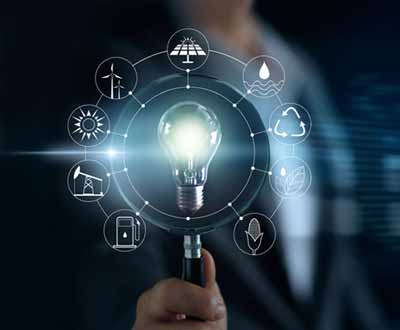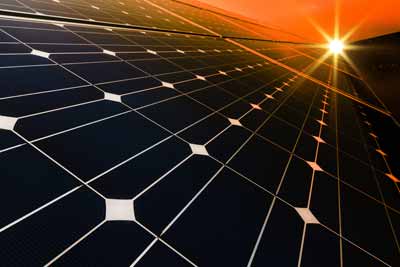The uses of light in the energy industry help set the table for power generation and distribution. Light is important for both processes. Without it, electricity would not be generated or distributed properly. Electricity uses electrons to produce its energy. Light helps to excite these electrons so that they are more active and able to be harnessed. This is known as the photovoltaic effect, and it uses light for both energy generation and distribution purposes.
Using light for a variety of purposes

The uses of light include uses for illumination, uses in art and entertainment and uses for other such as food production, communications and transportation. Light energy is also necessary for global positioning systems (GPS) to operate correctly.
In the energy industry, light uses include uses in power generation and uses in distribution. In power generation, light uses include uses for solar cells, uses for gas lasers, uses for incandescent light bulbs and uses for fluorescent tubes. For example, uses for solar cells include uses for light emitting diodes (LEDs) and uses for lasers.
In power distribution, uses of light include uses for lighting purposes. Uses for lighting include uses for road lighting, uses in homes, uses in businesses and uses in other types of buildings. In homes, a significant use of light is for uses in kitchens and uses in living rooms.
Other uses of light energy include uses for uses in global positioning systems (GPS). GPS uses signals from satellites to determine the exact location of a receiver. The uses of light are necessary for these satellite communications to operate correctly.
Uses of light for other purposes

Light is also used in food production. In greenhouses, uses of light include uses for photosynthesis and uses in other uses. Photosynthesis uses light energy to convert water, carbon dioxide and nutrients into carbohydrates. This process produces oxygen that is necessary for plant and animal life on Earth.
In communications, uses of light include uses for laser beams used in fiber optic cables, uses for optical wireless communication and uses for uses in other types of communication. In transportation, uses of light include uses in automobiles and uses in boats. Automobiles use uses for headlights while boats use uses for marine navigation systems that provide uses of light as signals to ships.
Another purpose is uses for art and entertainment. Examples include uses in fireworks and uses in other types of entertainment uses. Fireworks use light energy to create explosions in the sky to create uses of light for entertainment.
Properties of light
Light is a form of electromagnetic radiation that is detectable by the human eye. The uses of light include transmission and utilization.
Summery
Practically everything we do uses light energy. It is used to produce, transmit and use for many purposes, including powering our homes and schools and supplying the power for global positioning systems that track objects all around the world. Light also helps us produce food, communicate with one another and get from point A to point B. It is used in photography and uses to create uses of light for entertainment.

Denise Moreno is a business consultant. She teaches people how to start a business. She tries to understand her client her own thought, tricks and show the possible way to start a business. She worked with hundreds of clients and made them successful. She earned his degree in the University of South Florida. Lynn is her husband’s name. They got married in 2009. They have two girls. Both of them have a passion for travel.

